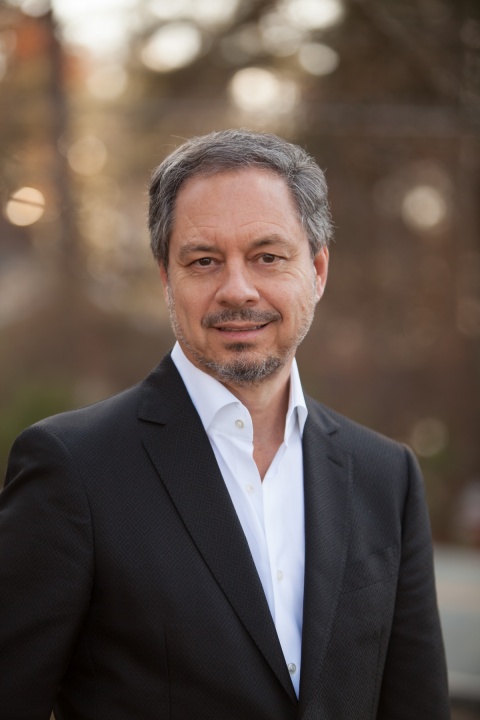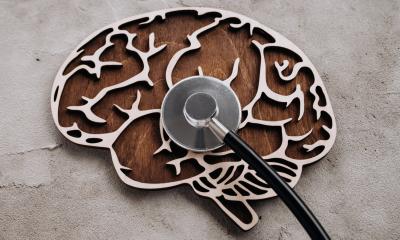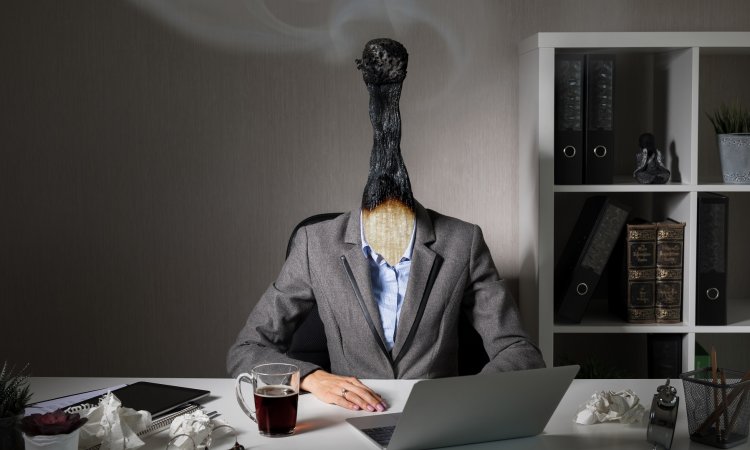Article • Professional affairs
Radiologists suffer from burnout and gender inequality
In an exclusive interview, Mauricio Castillo, president of the American Roentgen Ray Society (ARRS), spoke about the impact of dissatisfaction and gender discrimination in radiology, the focus of his Wilhelm Conrad Roentgen Honorary Lecture at ECR 2017
Interview: Mélisande Rouger

Burnout, dissatisfaction and gender inequality are recognised phenomena among physicians, and recent studies reveal they increasingly affect radiologists. ‘We’re hurting in these aspects,’ confirmed Dr Mauricio Castillo, the JH Scatliff Distinguished Professor and head of neuroradiology at University of North Carolina, in Chapel Hill, USA.
Radiologists are among the best-paid physicians in the USA. In 2011 they earned more than any other specialty and ranked sixth in 2015. ‘We earn more than in 2011, but our salaries have not increased at the rate of other specialties. But we still do very well,’ Castillo agreed.
However, only around 50% of radiologists felt fairly compensated and satisfied with their career choices, according to a study conducted among almost 20,000 physicians by Medscape in 2016. (http://www.medscape.com/features/slideshow/compensation/2016/public/overview#page=1)
Evidence collected over the past few years has also increasingly shown that radiologists are depressed. And worse, they suffer burnout.
A 2015 study led by the Mayo Clinic showed that burnout affected over 39,000 physicians in the USA especially family doctors, urologists, physical medicine and rehabilitation specialists… as well as radiologists.
‘Ten years ago, the proportion of radiologists seeking counselling was negligible. Today this figure has increased by 400% and more radiologists are quitting their jobs for positions inside the industry,’ Castillo pointed out.
The neuroradiologist became alarmed after a study conducted at his university revealed how disheartened radiology residents felt. In a questionnaire sent to 504 residents about the issue of feeling extremely tired or burnout, those who said they were the most exhausted were the surgeons and radiologists.
‘I was surprised. But burnout has been on everybody’s mind, including the American College of Radiology, which has taken a significant interest in this issue to ensure it is being properly tackled in medical schools,’ he said. ‘At UNC, one of our top priorities is to take care of our own, by making sure that people have appropriate psychological help and achieve a life-work balance.’
To take care of its staff, UNC has launched a three-year program, in which it will inject US$300,000.
This is an essential step, Castillo argued, as radiologists usually don’t receive help in their daily work and find themselves increasingly squeezed by finances.
‘We do a lot more studies than ever before, which has made our salaries go up, but also lead to burnout. Radiology used to have fixed schedules similar to anaesthesia. Now you can never leave,’ he said. ‘Studies always have to be read, turnaround time has decreased and we are expected to have everything ready within minutes. We are teaching that to residents. Getting that turnaround time in less than one hour is compromising what is being learned, but it’s how we work nowadays. We’re held accountable for how many studies were read within the 60 minutes threshold. It’s the same during the weekend, and this, of course, increases burnout.’
Radiology has one of the lowest percentages of women in medicine and that’s amazing when you think that 50-60% of all medical students who are now graduating are women
Mauricio Castillo
The profession’s inherent lack of contact with people also adds up to burnout and creates a sense of frustration.
Castillo believes these factors have led to a significant decrease in interest from medical students in radiology, an alarming fact as experts predict the profession will need 20% more radiologists by 2025 when the last baby boomers retire. Radiology has become even more unpopular among women medical students.
‘Radiology has one of the lowest percentages of women in medicine and that’s amazing when you think that 50-60% of all medical students who are now graduating are women,’ Castillo observed. In 2013-14, radiology was not even in the top ten of entering in the pipeline women applicants, students and residents, according to the Association of American Medical Colleges (AAMC). The unattractive, poor life/work balance experienced in radiology is possibly one of the main reasons why women disregard radiology as a career choice, he suggested; but gender inequality in salary and career advancement may not be far behind.
Studies in this field show that women in medicine make an average 25-35% less than men for an equal position, and the number of women becoming full professors in medicine is small compared to the number of men. 38% of a medical faculty are women, and only 21% are full professors and 16% are deans, according to the AAMC.
The USA has done the most research on this topic, but the problem is also very much present in Europe and probably the rest of the world, and it should receive more attention from everyone, Castillo believes. ‘In Western Europe and Scandinavian countries the question of gender inequality seems a little less obvious than in the USA. However, when you speak to women in Europe they feel that there’s inequality of gender in respect to free time, advancement within the career and between salaries, so this has become an issue there, too.’
* ECR 2017. 1-5 March. Vienna, Austria
* ARRS Annual Meeting. 30 April – 5 May. New Orleans, USA.
Profile:
Mauricio Castillo MD is the James H Scatliff distinguished professor of radiology as well as chief and program director of neuroradiology at the University of North Carolina in Chapel Hill, N. Carolina. He is also the current president of the American Roentgen Ray Society. Dr Castillo completed his radiology and neuroradiology training at the University of Miami School of Medicine, Jackson Memorial Medical Centre, and Emory University School of Medicine, Affiliated Hospitals in Atlanta. His research interests include paediatric neuro-imaging, application of new imaging techniques and medical literature editing. Within the latter, he has authored more than 640 articles and 25 books including the famous Neuroradiology Companion (now in fifth edition), a reference work covering the fundamentals of neuroradiology for residents, fellows and practitioners.
Event information:
HL 1 - Wilhelm Conrad Röntgen Honorary Lecture
Thursday, March 2, 12:15 - 12:45
Room: A
Session Type: Honorary Lecture
02.03.2017











